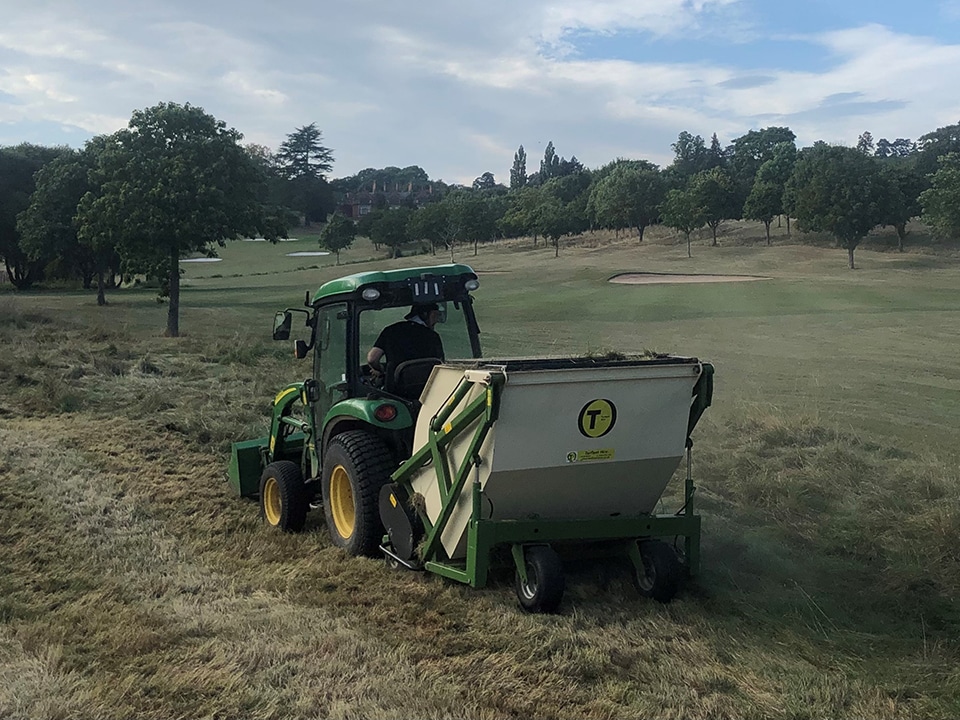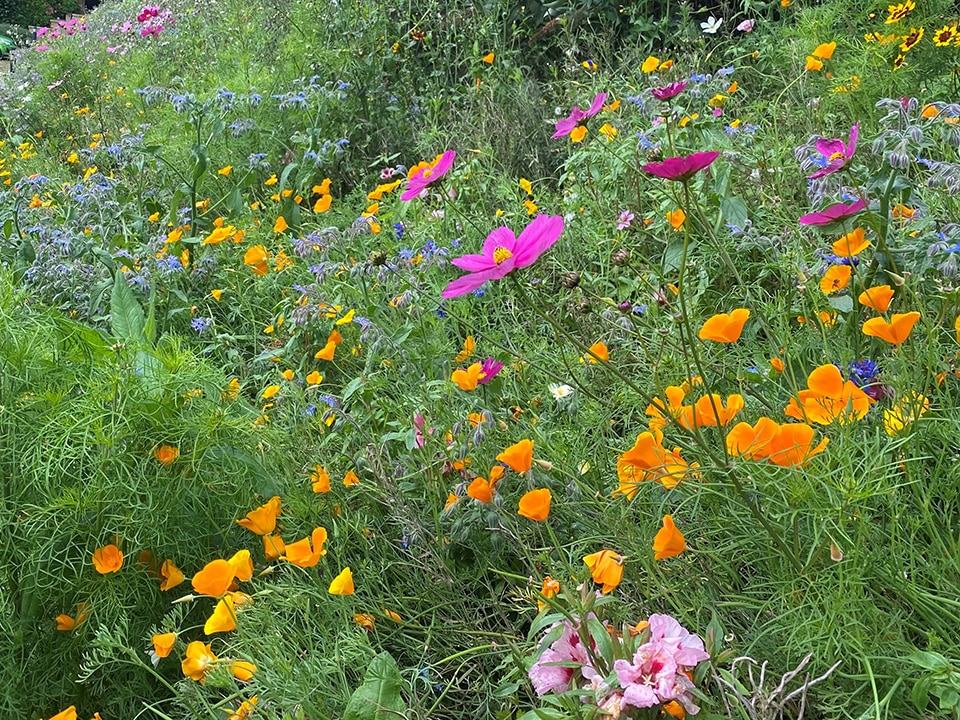The Greenest of Greenkeepers
Richard Sheldon, head greenkeeper at Welcombe Golf Club (Stratford), on his commitment to nature as part of his greenkeeping practice.
When I started green keeping 18 years ago I didn’t know anything about nature, or golf for that matter, I just wanted to work outside. Over that time, more and more focus has been put onto sustainability and working in ways to benefit nature, and rightly so. As custodians of great areas of land across the country, it’s important that we maximise its potential benefits for wildlife, and at the same time enhance the natural surroundings for the enjoyment of the golfers. Here I’ll explain some of the maintenance practices we carry out at The Welcombe, and why we do them.
All courses vary slightly in the amount of space they have and variety of natural features. At The Welcombe we’re very fortunate that our course is spread over a large area, meaning we have lots of space between holes for different habitats. The majority of our holes have fairway down the middle, semi rough, rough, long rough, and then scrub or woodland. We also have two lakes, a stream and a waterfall. These provide a wide variety of habitats. The main area that has to be managed for both nature and golfer is the long rough. We only let the grass grow long in places that no golfer should be. But as a ‘below average’ golfer myself, I know just how easy it can be to end up in places you shouldn’t. At the beginning of each September, all the long grasses that are adjacent to play are cut and collected. If left to die back naturally they would add nutrients back into the soil which would encourage them to grow back thicker the following year. By removing the cuttings every year we continually reduce the nutrients in the soil, promoting a much finer grass sward. This helps your chances of finding that wayward golf ball but also creates a better environment for insects and space for wildflowers to establish. Following on from that we cut the long grasses that are slightly further from play but we don’t collect the cuttings. By cutting them down each year it stops them evolving into scrub/woodland, and by leaving the cuttings it promotes a nice thick grassland for small rodents such as mice and voles. The deer that we have roaming our course in the early hours of the morning also love to graze in these areas.
Next we have the scrub land. This is a truly wild area left to its own devices, containing dog rose, bramble, rhododendrons, hawthorn, thick grasses etc. This provides a great habit and cover for ground nesting birds and a food source for the birds nesting in the adjacent woodland. These areas are well away from play and form an important transitional area from grassland to woodland.
As golfers make their way around the course, the deer that were previously grazing the course move into the woodland. The woodlands provide some cover for the deer to hide away and also a nesting ground for a large variety of birds and bats. The woodlands also require maintaining to keep them in their best condition, and this is one of the many jobs we carry out through the winter. If the trees are overcrowded they all struggle, so the trees are thinned out to allow the remaining trees to thrive. This also helps to get light through to the woodland floor to help new growth establish. Fallen and felled trees are then processed with branches chipped for use in the hotel gardens, and suitable logs go for use in the hotels open fire. Some logs are stacked in the woodlands to provide a residence for bugs and insects.
Our two lakes provide a home for birds that like to have a little paddle. Ducks, geese, coots, moorhens, oyster catchers, herons, and other water dwelling birds can regularly be seen on the course. We promote this by leaving a margin of long grass around the lakes. This gives a line of safe passage for the birds to move through and also gives them an area to nest. We aerate the lakes with the use of a fountain and a waterfall to keep the lakes clean and healthy for the fish and birds, and also as we use the water for our irrigation system. We pump fresh water into the lake from the river Avon to replace what we take for the irrigation, giving us a sustainable water source for keeping the course in top condition.
This year we have also established some wild flower areas. We had a bank next to the car park that was impossible to maintain, due to how steep it was. We removed all the vegetation from this area last year and then in the spring we seeded it with wildflowers that were specifically chosen to benefit pollinators such as bees and butterflies. This mix was chosen for its environmental benefits rather than its appearance, but even so has really brightened up the area, creating a low maintenance area that is both environmentally beneficial and aesthetically pleasing. The amount of bees and butterflies that are always flying between flowers would indicate it’s been a huge success. This is complimented by some beehives positioned nearby, with the honey being served in the hotel restaurant.
With so many habitats on the course, we pretty much have a full food chain. This is great for the environment. It’s also great for the game of golf. What can be more natural than being surrounded by nature. For many, a round of golf is a way to get outside, get some fresh air, and get some exercise. What can be better than doing this surrounded by deer grazing in the grass as it waves in the breeze, birds flying by and swooping down to catch the insects in the scrub land and ducks swimming by and seeming to laugh as you hit another ball into the lake. Personally, I don’t think anything could be better.
The foundation will continue to develop the greenergolf.co.uk website, and will be the organising body for sustainable golf events and activities that have been run up to now by the Leics and Rutland group. The current Steering Group will continue in existence as a consultative forum, the stakeholders of the foundation.
There will be far more on this development, and the aspirations of the foundation in the coming months.
The meeting concluded with clear support for this development, and with firm ideas for a WINTER CONFERENCE in 2024. The main topic for the conference will be WATER, and the challenges that face golf clubs over water in the future.
To contact Richard, email him on richard.sheldon@thewelcombehotel.co.uk.








